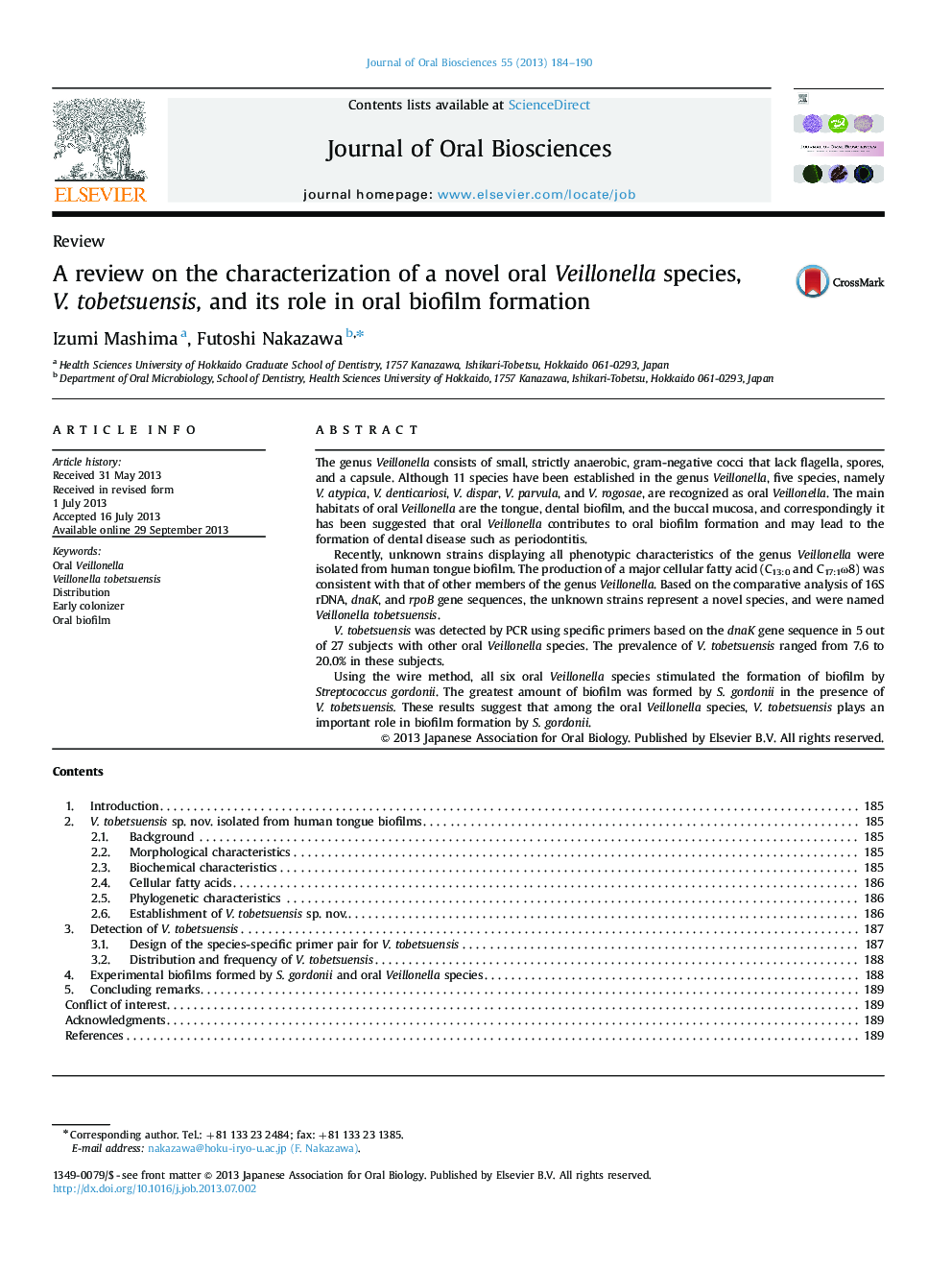| Article ID | Journal | Published Year | Pages | File Type |
|---|---|---|---|---|
| 2776842 | Journal of Oral Biosciences | 2013 | 7 Pages |
The genus Veillonella consists of small, strictly anaerobic, gram-negative cocci that lack flagella, spores, and a capsule. Although 11 species have been established in the genus Veillonella, five species, namely V. atypica, V. denticariosi, V. dispar, V. parvula, and V. rogosae, are recognized as oral Veillonella. The main habitats of oral Veillonella are the tongue, dental biofilm, and the buccal mucosa, and correspondingly it has been suggested that oral Veillonella contributes to oral biofilm formation and may lead to the formation of dental disease such as periodontitis.Recently, unknown strains displaying all phenotypic characteristics of the genus Veillonella were isolated from human tongue biofilm. The production of a major cellular fatty acid (C13:0 and C17:1ω8) was consistent with that of other members of the genus Veillonella. Based on the comparative analysis of 16S rDNA, dnaK, and rpoB gene sequences, the unknown strains represent a novel species, and were named Veillonella tobetsuensis.V. tobetsuensis was detected by PCR using specific primers based on the dnaK gene sequence in 5 out of 27 subjects with other oral Veillonella species. The prevalence of V. tobetsuensis ranged from 7.6 to 20.0% in these subjects.Using the wire method, all six oral Veillonella species stimulated the formation of biofilm by Streptococcus gordonii. The greatest amount of biofilm was formed by S. gordonii in the presence of V. tobetsuensis. These results suggest that among the oral Veillonella species, V. tobetsuensis plays an important role in biofilm formation by S. gordonii.
